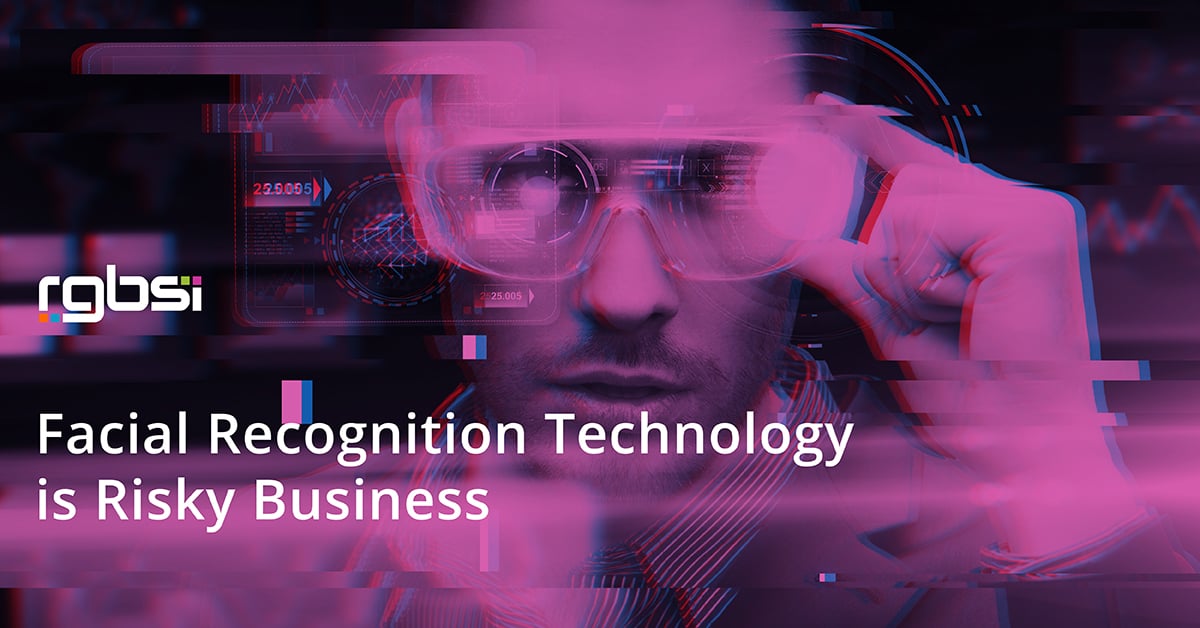
The application of facial recognition technology in business has become increasingly sophisticated over recent years, but may cause risky business practices. We are seeing it appear in various business sectors as the market for this technology continues to grow. Artificial intelligence (AI) is paired with the technology to create a smart facial recognition system for analysis.
The technology has already caused disruption in industries such as law enforcement, healthcare, electronics, banking, retail, and airline/travel. Facial recognition technology has enhanced our way of life. For example, it has helps us lock our mobile phones, secure digital payments, find missing children, and validate passport authenticity. But like any technology, along with the value-added benefits come vulnerabilities.
While it helps companies streamline operations, facial recognition technology raises cause for concern. The main concern surrounding this biometric technology is the absence of federal regulations and governance around its use. In addition, the technology is not 100% accurate in recognizing faces, which leads to misidentification. In fact, it is less accurate than iris recognition and fingerprint recognition.
How does AI detect facial recognition?
- Analog information is generated through a face capture. This information is transformed into a digital data set that is unique to the individual’s facial features.
- Facial profiles are created by classifying facial digital data sets.
- AI draws comparisons between facial patterns to match if two copies of a face belong to the same person.
Risks for Business
Misidentification Risks
Facial recognition technology comes with biases in accuracy. Several studies show that facial recognition is less accurate in identifying people of color and women. In fact a study shows a racial and gender bias with a 35% error rate on women of color. What is use of this technology lead to misidentifying a criminal for convictions? This could be very problematic. Additional concerns surround facial recognition ability to navigate facial aging and cosmetic surgery.
Data Privacy Risks
AI is used to compile more and more data through facial recognition technology to grow the digital big data of faces and improve detection accuracy. However, people never signed up to be a subject in a data collection experiment. When information is gathered on people unwillingly, it becomes invasive. Operating in the name of ethics, companies should gain consent to collect information through facial recognition technology. In addition, companies need to guarantee consumers that their information is stored safely and protected, as identity-theft through cyber-attacks is another business imposed risk on human life.
Security Risks
We have seen application of facial recognition technology in high security areas such as airports to strengthen security, but the data itself is highly susceptible to hackers. The captured data is stored in the cloud, and we all know that data in the cloud is extremely vulnerable to breaches. Along with evolving technology, cyber criminals have become more and more clever. If someone were to get their hands on this data, it would be easy to sell this information on the dark web or steal someone’s identity in a matter of seconds.
Conclusion
Although there is a lack federal regulations around this technology, the National Telecommunications and Information Administration (NTIA) has established a set of voluntary privacy best practices for commercial use of facial recognition. Businesses that opt to use facial recognition technology need to address the potential threats by creating policies and procedures that mitigate risk. This may include having a dedicated team to manage and regulate this area of the business. Companies that use this technology to collect data on people can lead to consumer distrust. Therefore, full transparency of facial recognition technology use must be conveyed to consumers and stakeholders about purpose, data collection, storage, and usage.
About RGBSI
At RGBSI, we deliver business solutions that close the gap between strategy and execution for global organizations of all sizes. Our portfolio of solutions spans across the verticals of workforce management, engineering, quality lifecycle management (QLM), and information technology (IT).
IT Expertise
We work with clients to support IT related areas of application development, ERP, infrastructure, project management, and digital engineering.
Learn more about our IT solutions.










